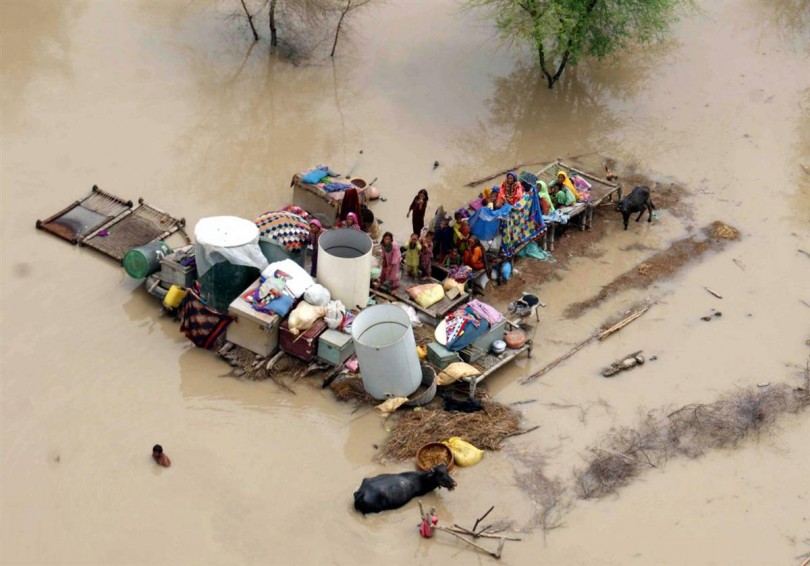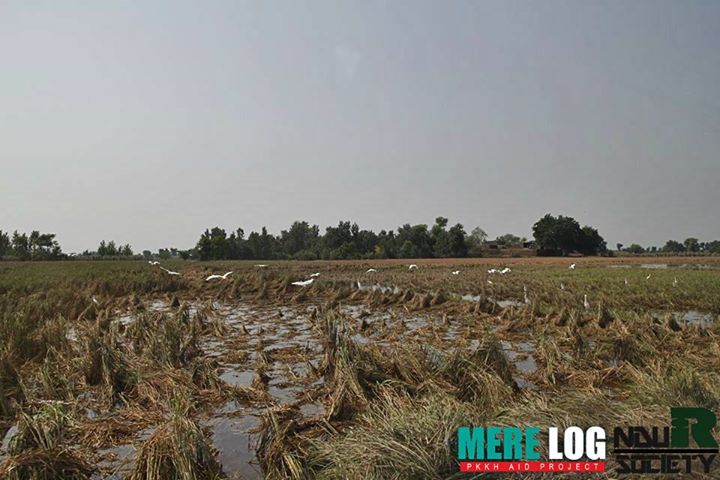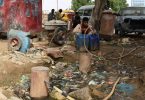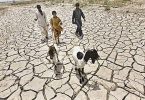For the last two decades, we have been witnessing changes in our weather and the occurrence of some unusual weather phenomena such as an early arrival of springtime, hotter summer and erratic precipitation and snowfall. These weather anomalies are the indicators of climate change.
Before proceeding further, the distinction between weather and climate must be described. Weather, in its common perception in terms of temperature, precipitation, humidity, visibility, wind velocity, cloudiness and sunshine, is the behavior of atmosphere over a short period of time. Climate, on the other hand is the pattern of weather in a particular area over relatively long periods of time. Likewise, weather changes are often quicker varying in minutes, hours, days or seasons while climate change refers to alterations in the long-term averages of daily weather.
Background
Climate change is not a new thing for this planet. Geological records show that the Earth has experienced major shifts in climate during its long history resulting from natural variations in the causative agents such as concentration of greenhouse gases (GHGs), continental drifting and wind patterns etc. Different physical and biological systems have shown adaptations to the gradual change. However, the current climate change is largely the result of human activities and is also happening at a much faster pace, altering all of the systems in a way that it is dangerous to rely on adaptation alone.
Therefore, it is imperative to find out the determinants of current climate change and to devise effective strategies for the mitigation of its impacts. As noted earlier, the current climate change is largely attributable to human activities. The most substantial of such activities is the increased emission of GHGs that in turn intensifies the greenhouse effect (GHE).
Greenhouse effect refers to the retention of infrared radiations emitting from Earth’s surface after it absorbs energy from sunlight. This retention of energy keeps the Earth warm, and a moderate GHE has in fact enabled the Earth to sustain life. However, the intensification of GHE caused due to increased accumulation of GHGs is dangerous.
GHGs are the compounds that contribute to GHE. Principal GHGs include carbon dioxide (CO2), methane (CH4), nitrous oxide (N2O), chlorofluorocarbons (CFCs) and ozone (O3). Human activities, most notably the combustion of fossil fuels, agriculture and deforestation are causing an uninterrupted rise in the atmospheric levels of GHGs, particularly CO2. The rising levels of CO2 are intimately linked to the warming of planet exhibited by an increase in global mean temperature and associated climate change events. CO2 emission varies geographically, industrial and developed countries being its largest contributors.
Implications of Climate Change
Persistent incidences of weather anomalies and climate-related hazards in the past two decades have shifted the concern over climate change from mere speculation to a challenging reality. Weather oscillations have already started to transform the natural and human systems in every corner of the globe, while forecasts are even more depressing.
The extent of climate change impacts will vary for different regions over time, depending on the capability of different systems to mitigate or adapt to change.
Some significant impacts include the following:
- Intensifying GHE is causing global warming. An increase of 10 Fahrenheit to global mean temperature has occurred during the past century, which is the highest in the past four centuries and the fastest rise in a thousand years. Since 1990, 10 hottest years have occurred; 2005 and 2010 being the warmest years on record. If the CO2 emissions are not reduced, the temperatures could rise by 3-50 Fahrenheit by the end of this century. It is important to point out that this is an average rise in global temperature; there could be a rise by 10 Fahrenheit in one area, by 120 Fahrenheit in another area and yet another area getting much colder.
- Many regions are experiencing alterations in the hydrological systems due to changes in precipitation and/or snow and ice melting.
- Although at present there are less number of extinctions attributed to climate change, there are strong evidences of changes in the geographical ranges, migration patterns, species interaction and seasonal activities of many biological species. If mitigation actions are not taken, one-fourth of all species could succumb to extinction by 2050.
- Significant negative impacts have been implicated for crop yield, particularly wheat and maize with consequent economic losses and food shortage.
- The worldwide burden of human ill-health is likely to increase as a consequence of heat-related mortality, decreased cold-related mortality and alterations in the distribution of some waterborne diseases and disease vectors such as mosquitoes.
- Increased frequency and severity of climate-related extremes such as droughts, floods, cyclones, heat waves and wildfires will affect agriculture, infrastructure, health, forestry, transportation and more.
Implications for Pakistan
Pakistan, an under-developed country situated in the subtropical zone is among the most vulnerable regions to face the consequences of climate change. Climate-related hazards are already evident in Pakistan affecting different systems, as briefly discussed below.
- There are significant changes taking place in the hydrological system of water, attributable to the melting of glaciers, alterations in precipitation and snowfall patterns, droughts, reduced runoff and deforestation in the catchment areas. Key risks associated with these changes include:
- An increased frequency of floods leading to large scale damages to infrastructure, livelihoods and settlements.
- Shrinkage of rivers in winter season. Indus river system – the lifeline of Pakistan, which was once sufficient to sustain one of the largest irrigation networks of the world, is now drying up.
- Deterioration of water quality owing to increased sediment load, pollutants loading during heavy rainfall and concentration of pollutants during droughts, resulting into reduced availability of usable water.
- Depletion of groundwater resources with consequent reductions in the water supplies for competing demands of drinking, domestic use and agriculture.
- Inadequate supply of irrigation water due to droughts and shortage of surface water resources.
- Intrusion of seawater due to receding Indus river water, rendering lands barren for agriculture use.
- Reductions in hydroelectric power generation.
- A significant reduction in the yield of main food crop, i.e. wheat is expected largely due to shortage of water in winters and a decrease in the duration of growing season. Key effects include direct economic losses to farmers and national GDP in addition to acute food shortage.
- An increase in the frequency of heat-related mortalities is expected due to severe summer season. A northward extension in the range of disease vectors and changes in the pattern and frequency of waterborne diseases due to increasing water pollution is also anticipated.
- Loss of biodiversity is expected due to habitat loss, pollution and exploitation.
- Problems for vulnerable and sensitive ecosystems are expected to worsen as a result of climate change. For example, mangrove forests are the key component of coastal ecosystems and provide breeding and nursery habitats for many biological species, including some species of economic importance. Reductions in the flow of Indus river water have rendered mangrove forests at a greater risk of disappearance. Upcoming droughts are likely to compound the existing threats to these fragile coastal forests.
Hence, the key outcomes of climate-related hazards are both biological and economical requiring effective strategies for mitigation.
Mitigation Strategies
Climate change is a global phenomenon and none of the countries, whether big or small, can fight the battle alone. Therefore, international bodies such as Intergovernmental Panel on Climate Change (IPCC) have been established which regularly monitor various aspects related to climate change such as the patterns of carbon consumption, weather phenomena, climate-related extremes and regional and global effects. Additionally, a greater part of responsibility lies on the individual countries as well. Many countries have established indigenous bodies to assess the regional impacts of climate change and to devise effective strategies to mitigate. Following prospects are important to combat the impacts of climate change in Pakistan:
- Improvement of watershed management, particularly through massive reforestation campaigns.
- Development of water reservoirs and infrastructure.
- Taking up measures for the identification of vulnerable areas.
- Improvement in the disaster monitoring and early warning systems.
- Integrated water resource management using integrated farming techniques.
- Improvements in water supply for agricultural and domestic uses.
- Efficient use of water in agricultural practices, industries and at homes.
- Timely cultivation and development of drought-resistant varieties of main crops.
- Promoting the use of alternate energy sources.
- Effective land use planning.
Pakistan is already facing multiple stressors such as energy crisis, poor infrastructure, insufficient medical care facilities, malnutrition, non-availability of safe drinking water and more. Climate change will exacerbate these problems leaving Pakistan as a very difficult living place for our children and grandchildren.
We have been very ruthless towards this land, and it still provides us air, water, food and safe place to live in. Though for how long will it keep on sustaining our livelihoods? Since our numbers have grown well over 180 million, we should now start thinking and acting rationally to make this land habitable for us and for generations to come.








